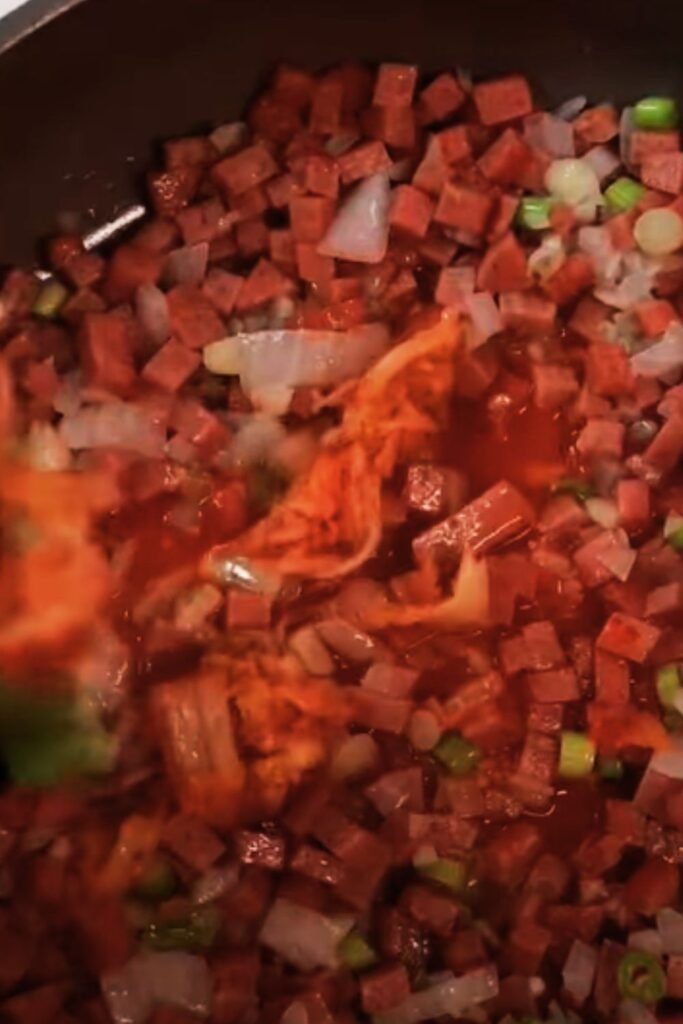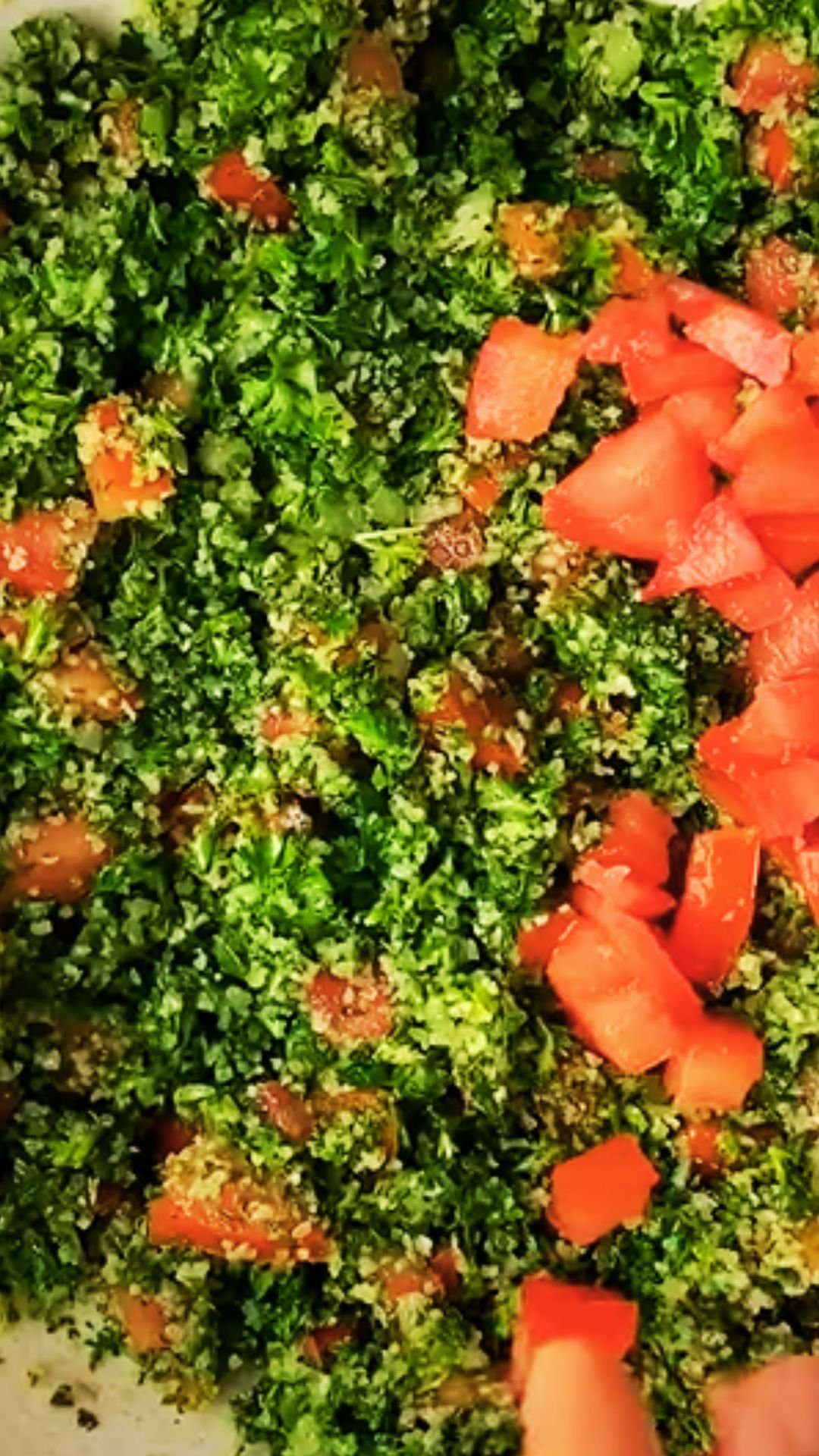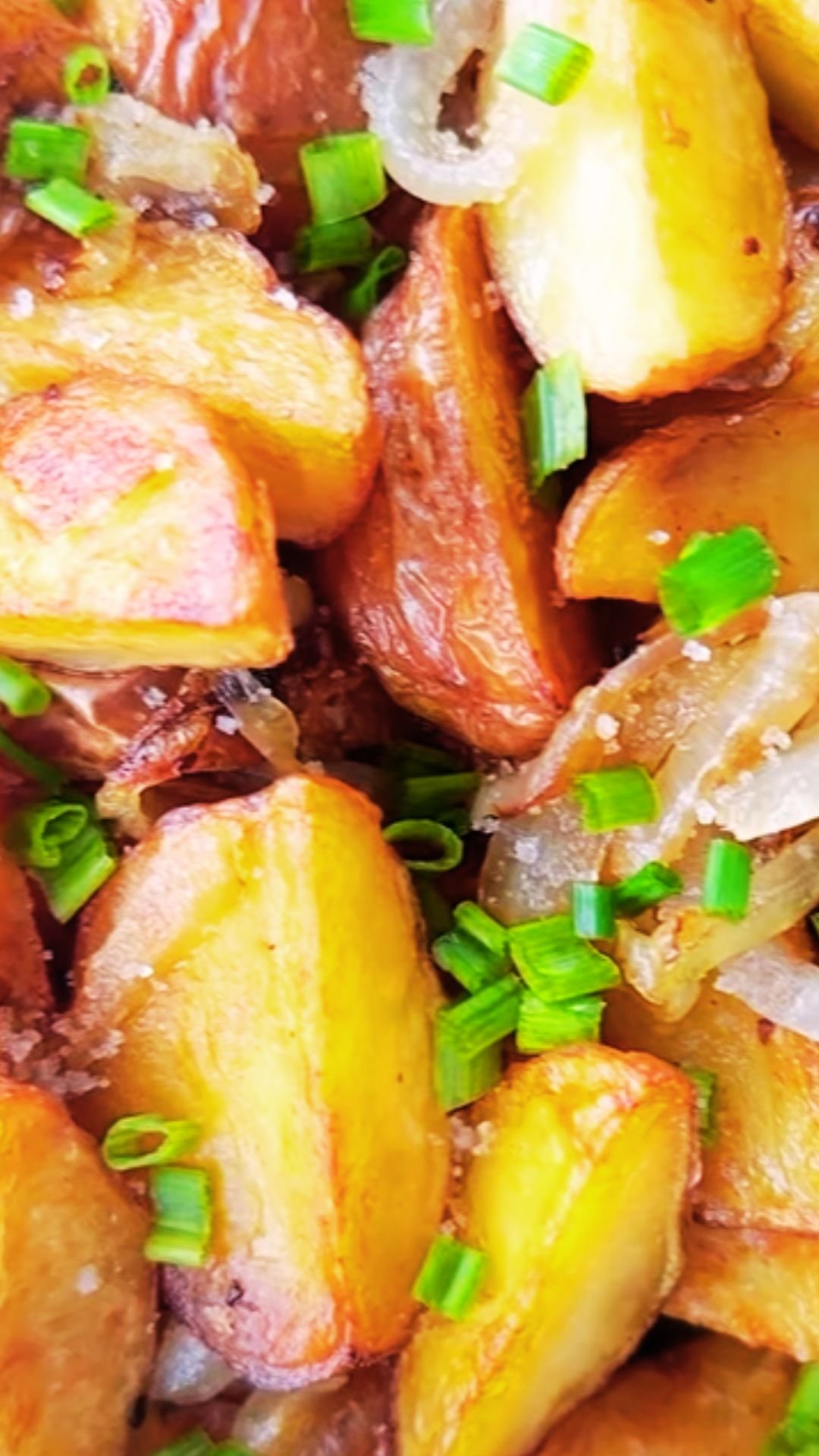I still remember the first time I tasted kimchi fried rice at a small Korean restaurant in my neighborhood. The smoky aroma, the perfect balance of tangy and savory flavors, and that satisfying sizzle from the pan – it was love at first bite. What amazed me even more was discovering how incredibly simple this dish is to make at home, requiring just 15 minutes and basic ingredients you probably already have in your kitchen.
Kimchi fried rice, or “kimchi-bokkeumbap” in Korean, is more than just a quick meal – it’s a beloved comfort food that transforms yesterday’s rice and aged kimchi into something absolutely magical. This dish represents the beautiful Korean philosophy of never wasting food, turning simple leftovers into a restaurant-quality meal that’s both satisfying and packed with probiotics.
What Makes Kimchi Fried Rice So Special?
Kimchi-bokkeumbap: The Korean term for kimchi fried rice, literally meaning “kimchi stir-fried rice,” is a staple in Korean households and represents the art of transforming simple ingredients into complex flavors.
Fermented vegetables: The key to exceptional kimchi fried rice lies in using well-fermented kimchi, which provides the characteristic tangy, umami-rich flavor that makes this dish irresistible.
Wok hei: The smoky flavor achieved through high-heat cooking that gives the rice its signature charred edges and deep flavor complexity.
The magic of kimchi fried rice lies in its simplicity and the way fermented kimchi transforms ordinary rice into something extraordinary. This simple, simple stir fried dish of rice and kimchi is super, super tasty, and I couldn’t agree more. The fermentation process in kimchi creates complex flavors that penetrate every grain of rice, while the natural sugars caramelize beautifully in the pan.
Essential Ingredients for Perfect Kimchi Fried Rice
Core Ingredients
| Ingredient | Amount (4 servings) | Purpose | Substitution Options |
|---|---|---|---|
| Day-old cooked rice | 4 cups | Base carbohydrate | Fresh rice (cooled completely) |
| Kimchi | 1 cup, chopped | Primary flavor | Sauerkraut (less authentic) |
| Kimchi juice | 2-3 tablespoons | Liquid seasoning | Rice vinegar + soy sauce |
| Vegetable oil | 2 tablespoons | Cooking fat | Sesame oil, peanut oil |
| Garlic | 3 cloves, minced | Aromatic base | Garlic powder (1 tsp) |
| Scallions | 3-4 stalks | Fresh finish | Chives, onions |
| Eggs | 2-3 large | Protein richness | Tofu scramble |
| Soy sauce | 1-2 tablespoons | Umami depth | Tamari, coconut aminos |
| Sesame oil | 1 teaspoon | Nutty finish | Toasted sesame seeds |
Protein Additions
The beauty of kimchi fried rice is its versatility. I love experimenting with different proteins to create unique variations:
SPAM: The classic Korean addition that provides salty, porky richness. Dice it small and fry until crispy edges form.
Bacon: Renders beautiful fat that adds smoky depth to the entire dish. I prefer thick-cut bacon for better texture.
Leftover meat: Shredded pork, beef, or chicken work wonderfully. This is where the dish truly shines as a leftover transformer.
Tofu: For vegetarian versions, use firm tofu, pressed and cubed, then pan-fried until golden.
Step-by-Step Cooking Instructions
Preparation Phase (5 minutes)
Before I even turn on the stove, I make sure everything is prepped and ready. Korean cooking moves fast, especially stir-frying, so having everything within arm’s reach is crucial.
First, I break up my day-old rice with my hands, ensuring there are no clumps. Fresh rice works too, but it must be completely cooled – I sometimes spread it on a baking sheet for 10 minutes to achieve the right texture. The individual grains should separate easily without being mushy.
Next, I chop my kimchi into bite-sized pieces, roughly thumbnail-sized. I reserve the kimchi juice separately – this liquid gold is what gives the dish its authentic flavor. The kimchi should be well-fermented, with a tangy aroma and slightly softened texture.
Cooking Process (10 minutes)
Step 1: Heat the pan (1 minute) I heat my wok or large skillet over medium-high heat until it’s smoking slightly. The high heat is essential for achieving that characteristic wok hei flavor. I add the vegetable oil and swirl it around to coat the bottom evenly.
Step 2: Cook the aromatics (2 minutes) Garlic goes in first, followed immediately by the chopped kimchi. I stir constantly to prevent burning while allowing the kimchi to caramelize slightly. The kimchi should start to look darker and smell incredibly fragrant.
Step 3: Add the rice (3 minutes) I add the rice all at once, breaking up any remaining clumps with my spatula. This is where the magic happens – I let portions of the rice sit undisturbed for 30-45 seconds at a time to develop crispy, golden bits before stirring. These crispy bits add incredible texture to the final dish.
Step 4: Season and sauce (2 minutes) I drizzle the kimchi juice and soy sauce around the edges of the pan, allowing them to sizzle before mixing everything together. The liquids should evaporate quickly, leaving behind concentrated flavor.
Step 5: Protein integration (2 minutes) If I’m using pre-cooked proteins like SPAM or bacon, I add them now to heat through. For eggs, I push the rice to one side of the pan, scramble the eggs in the empty space, then fold everything together.
Finishing Touches
The final step is crucial – I drizzle sesame oil around the edges of the pan and give everything one final toss. The sesame oil should hit the hot pan and become fragrant immediately. I garnish with chopped scallions and serve immediately while the rice is still sizzling.

Nutritional Information and Health Benefits
Nutritional Breakdown (Per Serving)
| Nutrient | Amount | % Daily Value |
|---|---|---|
| Calories | 320-380 | 16-19% |
| Protein | 12-15g | 24-30% |
| Carbohydrates | 55-60g | 18-20% |
| Dietary Fiber | 3-4g | 12-16% |
| Fat | 8-12g | 12-18% |
| Sodium | 800-1200mg | 35-52% |
| Vitamin C | 15-20mg | 17-22% |
| Probiotics | 1-2 billion CFU | Varies |
Health Benefits
Probiotic powerhouse: Kimchi is loaded with beneficial bacteria that support digestive health and immune function. These probiotics survive the cooking process partially, though raw kimchi contains more live cultures.
Vitamin C boost: Fermented cabbage retains high levels of vitamin C, making this dish unexpectedly nutritious for immune support.
Fiber content: The combination of rice and fermented vegetables provides good dietary fiber for digestive health.
Low in saturated fat: When made with minimal oil, this dish provides satisfying comfort food without excessive unhealthy fats.
Antioxidant rich: The fermentation process actually increases certain antioxidants, particularly beta-carotene and vitamins K and C.
Variations and Customizations
Regional Variations
Seoul-style: Features SPAM and American cheese, reflecting the influence of U.S. military presence. The cheese melts into the hot rice, creating an incredibly creamy texture.
Busan-style: Often includes seafood like dried anchovies or small shrimp, reflecting the coastal city’s maritime culture.
Temple-style: Completely vegetarian version using mushrooms and tofu, developed in Buddhist temples where meat is forbidden.
Protein Variations
| Protein Type | Cooking Method | Flavor Profile | Best For |
|---|---|---|---|
| SPAM | Dice and crisp | Salty, smoky | Traditional taste |
| Bacon | Render fat first | Rich, smoky | Western fusion |
| Pork belly | Slow cook, then crisp | Fatty, savory | Authentic Korean |
| Chicken thigh | Pre-cook, then add | Mild, versatile | Health-conscious |
| Beef bulgogi | Marinate, then stir-fry | Sweet, savory | Special occasions |
| Tofu | Press, cube, pan-fry | Neutral, protein-rich | Vegetarian option |
| Shrimp | Quick sauté | Sweet, oceanic | Seafood lovers |
Vegetable Additions
I love adding extra vegetables to boost nutrition and create different flavor profiles. Bean sprouts add crunch, while shiitake mushrooms contribute umami depth. Carrots provide sweetness and color, and bell peppers add freshness. The key is not to overcrowd the pan – vegetables should enhance, not overwhelm the kimchi flavor.
Common Mistakes and How to Avoid Them
Rice Preparation Errors
Using freshly cooked rice: This is the most common mistake I see. Fresh rice is too moist and will turn mushy when stir-fried. Day-old rice that’s been refrigerated has the perfect texture – the grains have dried out slightly and separated naturally.
Not breaking up rice clumps: Cold rice forms clumps that won’t separate properly during cooking. I always break up the rice with my hands before cooking, ensuring even heating and better texture.
Heat Management Issues
Cooking at too low temperature: Kimchi fried rice needs high heat to develop proper flavor. Low heat results in steamed rice rather than the desired caramelized, slightly crispy texture.
Constant stirring: Many home cooks stir constantly, preventing the rice from developing those crucial crispy bits. I let portions of the rice sit undisturbed for 30-45 seconds to achieve proper browning.
Seasoning Problems
Adding too much liquid: Kimchi juice and soy sauce should enhance, not drown the rice. I add liquids gradually, allowing each addition to evaporate before adding more.
Underseasoning: The rice absorbs a lot of flavor, so don’t be afraid to taste and adjust seasoning throughout cooking.
Storage and Reheating Guidelines
Proper Storage
Kimchi fried rice keeps well in the refrigerator for up to 4 days when stored in airtight containers. I always let it cool completely before refrigerating to prevent condensation, which can make the rice soggy.
For longer storage, kimchi fried rice freezes beautifully for up to 3 months. I portion it into individual servings using freezer bags, removing as much air as possible to prevent freezer burn.
Reheating Methods
| Method | Time | Best For | Tips |
|---|---|---|---|
| Microwave | 2-3 minutes | Quick meals | Add 1 tbsp water, cover |
| Stovetop | 3-5 minutes | Best texture | Use medium heat, stir frequently |
| Oven | 10-15 minutes | Large portions | Cover with foil, 350°F |
| Air fryer | 3-4 minutes | Crispy texture | Shake basket halfway |
The stovetop method is my preferred reheating technique because it allows me to restore some of the original crispy texture. I add a small amount of oil to the pan and stir-fry the rice until heated through and slightly crispy again.
Serving Suggestions and Pairings
Traditional Korean Accompaniments
Banchan: Small side dishes are essential to a Korean meal. I serve kimchi fried rice with pickled radish, seasoned bean sprouts, and additional fresh kimchi.
Korean soup: A light soup like miyeok-guk (seaweed soup) or doenjang-jjigae (soybean paste stew) balances the rich, salty flavors of the fried rice.
Fried egg: The classic topping that adds richness and visual appeal. I fry the egg sunny-side up with crispy edges – the runny yolk becomes a natural sauce when mixed with the rice.
Modern Fusion Pairings
Asian fusion: I love serving it alongside Korean-style grilled vegetables or bulgogi lettuce wraps for a complete Korean barbecue experience.
Healthy additions: Fresh cucumber salad or steamed broccoli adds freshness and balances the dish’s richness.
Comfort food combinations: Sometimes I serve it with Korean-style corn dogs or pajeon (Korean pancakes) for an indulgent Korean comfort food feast.
Beverage Pairings
Traditional: Barley tea (boricha) or green tea complement the dish’s bold flavors without competing.
Modern: Sparkling water with lime or Korean pear juice provides a refreshing contrast to the rich, salty rice.
Non-alcoholic cocktails: A cucumber-mint mocktail or ginger-based drink cleanses the palate beautifully.
Troubleshooting Guide
Texture Issues
Rice too mushy: This usually indicates too much liquid or cooking at too low heat. Next time, use less kimchi juice and ensure your pan is properly heated before adding ingredients.
Rice too dry: Add a tablespoon of kimchi juice or water, cover the pan briefly to create steam, then stir and continue cooking.
No crispy bits: Increase heat and resist the urge to stir constantly. Let the rice sit undisturbed in portions to develop proper browning.
Flavor Problems
Too salty: Add more cooked rice to dilute the saltiness, or serve with a fried egg and fresh vegetables to balance the flavors.
Lacks depth: This often means the kimchi wasn’t fermented enough or you didn’t use enough kimchi juice. Well-aged kimchi is crucial for authentic flavor.
Too spicy: Add a dollop of sour cream or serve with a cooling side like cucumber salad. For next time, use milder kimchi or reduce the quantity.
Questions and Answers
Q: Can I make kimchi fried rice with fresh rice instead of day-old rice?
You can, but the results won’t be as good. Fresh rice contains too much moisture and tends to become mushy when stir-fried. If you must use fresh rice, spread it on a baking sheet and let it cool completely for at least 30 minutes, preferably longer. The individual grains should separate easily and feel slightly dry to the touch.
Q: What’s the best type of kimchi to use for fried rice?
Well-fermented kimchi that’s been aged for at least a week works best. The kimchi should be tangy and slightly sour, with a softer texture than fresh kimchi. Avoid kimchi that’s too fresh or too old and mushy. The ideal kimchi for fried rice has a nice balance of tanginess and still maintains some texture.
Q: How do I know when my kimchi fried rice is properly cooked?
The rice should have a slightly crispy texture in places, with individual grains that are heated through but not mushy. You should see some golden-brown bits throughout the rice, and it should have a fragrant, slightly smoky aroma. The kimchi should be well-incorporated and heated through, appearing slightly darker than when you started.
Q: Can I make kimchi fried rice without kimchi juice?
While kimchi juice is traditional and provides the best flavor, you can substitute it with a mixture of rice vinegar, soy sauce, and a tiny bit of sugar. Use about 1 tablespoon rice vinegar, 1 tablespoon soy sauce, and a pinch of sugar to replace 2 tablespoons of kimchi juice. However, the flavor won’t be quite as authentic.
Q: Is kimchi fried rice healthy?
Yes, kimchi fried rice can be quite healthy. It’s rich in probiotics from the fermented kimchi, provides good amounts of fiber and vitamins, and can be made with minimal oil. The fermentation process actually increases certain nutrients in the kimchi. To make it even healthier, use brown rice, add extra vegetables, and limit the amount of processed meats.
Q: How spicy is kimchi fried rice?
The spice level depends entirely on the kimchi you use. Korean kimchi ranges from mild to very spicy. If you’re sensitive to heat, start with a smaller amount of kimchi and taste as you go. You can always add more, but you can’t take it away. Most store-bought kimchi in Western countries tends to be milder than traditional Korean versions.
Q: Can I make kimchi fried rice vegan?
Absolutely! Simply omit any meat or eggs and use extra vegetables like mushrooms, carrots, or bean sprouts for protein and texture. Firm tofu, pressed and cubed, makes an excellent protein substitute. Make sure your kimchi is vegan-friendly, as some traditional recipes include fish sauce or shrimp paste.
Q: What’s the secret to getting the perfect crispy texture?
The key is high heat and patience. Make sure your pan is very hot before adding ingredients, use enough oil to prevent sticking, and resist the urge to stir constantly. Let portions of the rice sit undisturbed for 30-45 seconds at a time to develop those golden, crispy bits that make kimchi fried rice so addictive.
Q: How long does kimchi fried rice last in the refrigerator?
Properly stored kimchi fried rice will keep for 3-4 days in the refrigerator. Store it in airtight containers and make sure it’s completely cooled before refrigerating. When reheating, add a splash of water or oil to prevent it from drying out, and stir-fry it briefly to restore some of the original texture.
Q: Can I prepare kimchi fried rice ahead of time?
While kimchi fried rice is best served immediately, you can prep the ingredients ahead of time. Chop the kimchi, prepare your proteins, and have your rice ready. However, I don’t recommend cooking it completely ahead of time, as it loses its signature crispy texture when reheated. The dish cooks so quickly that it’s better to prepare it fresh when you’re ready to eat.
This 15-minute kimchi fried rice has become my go-to solution for quick, satisfying meals that never fail to impress. The combination of tangy kimchi, perfectly textured rice, and that irresistible smoky flavor from high-heat cooking creates something truly special. Whether you’re new to Korean cuisine or a seasoned enthusiast, this dish offers the perfect introduction to the incredible world of Korean comfort food. Give it a try, and I guarantee you’ll understand why this simple dish holds such a special place in Korean hearts and kitchens worldwide.


